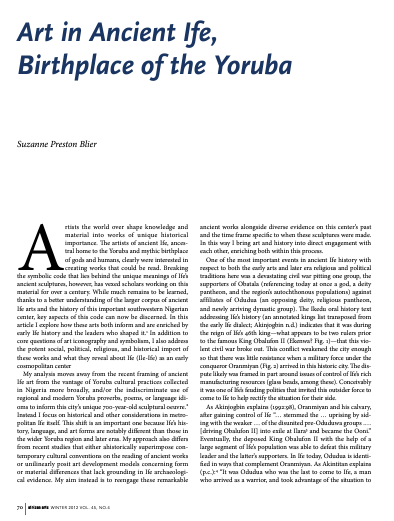
Art in Ancient Ife, Birthplace of the Yoruba
Author: Suzanne Preston Blier Category: Geo-Politics, History, Journals, Nigerian History, Philosophy, Politics, Religion, Yoruba History More DetailsArtists the world over shape knowledge and material into works of unique historical importance. The artists of ancient Ife, ancestral home to the Yoruba and mythic birthplace of gods and humans, clearly were interested in creating works that could be read. Breaking the symbolic code that lies behind the unique meanings of Ife’s ancient sculptures, however, has vexed scholars working on this material for over a century. While much remains to be learned, thanks to a better understanding of the larger corpus of ancient Ife arts and the history of this important southwestern Nigerian center, key aspects of this code can now be discerned. In this article I explore how these arts both inform and are enriched by early Ife history and the leaders who shaped it.1 In addition to core questions of art iconography and symbolism, I also address the potent social, political, religious, and historical import of these works and what they reveal about Ife (Ile-Ife) as an early cosmopolitan center My analysis moves away from the recent framing of ancient Ife art from the vantage of Yoruba cultural practices collected in Nigeria more broadly, and/or the indiscriminate use of regional and modern Yoruba proverbs, poems, or language idioms to inform this city’s unique 700-year-old sculptural oeuvre.2
